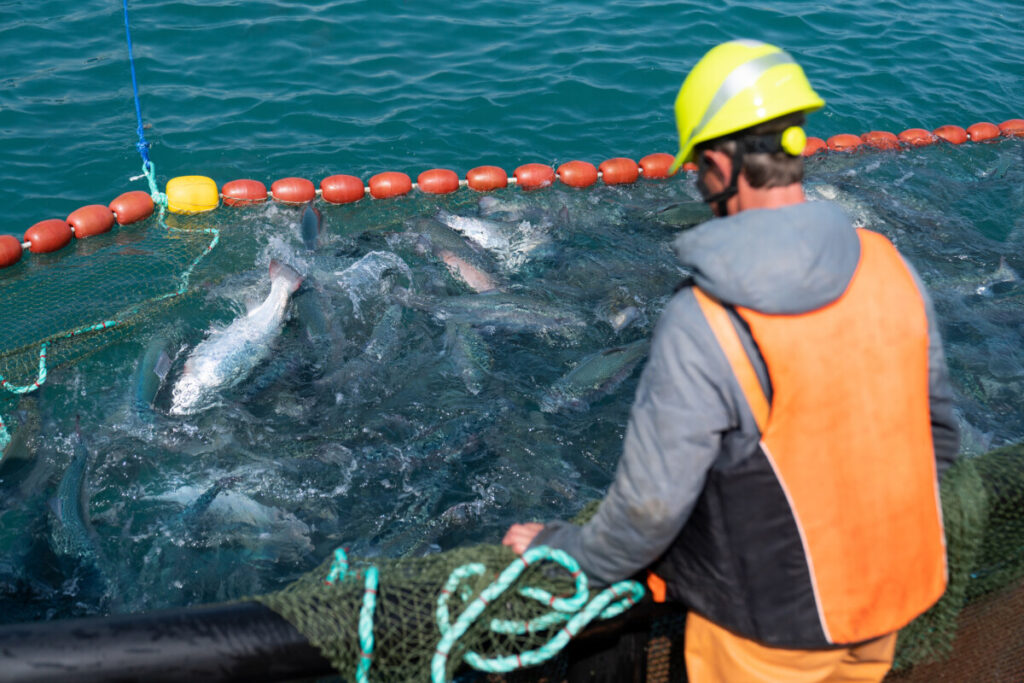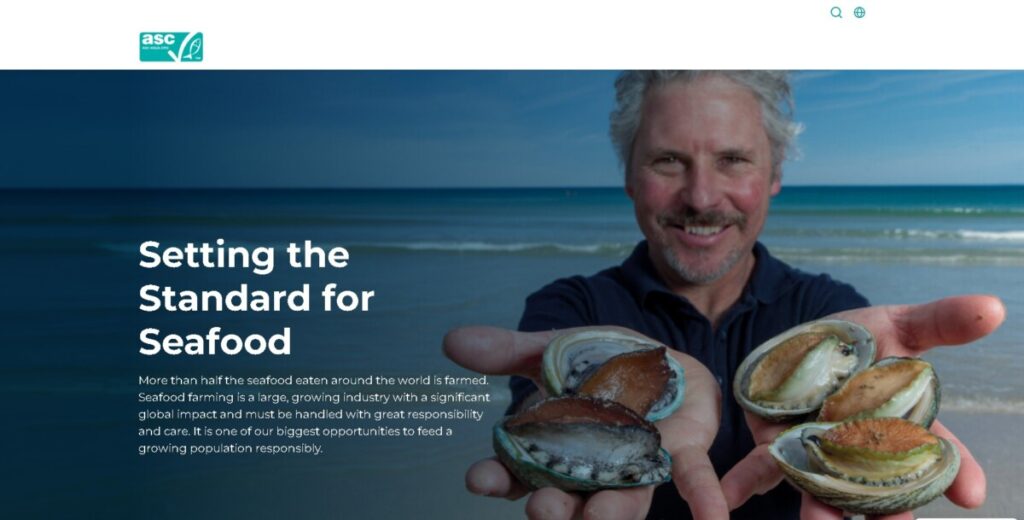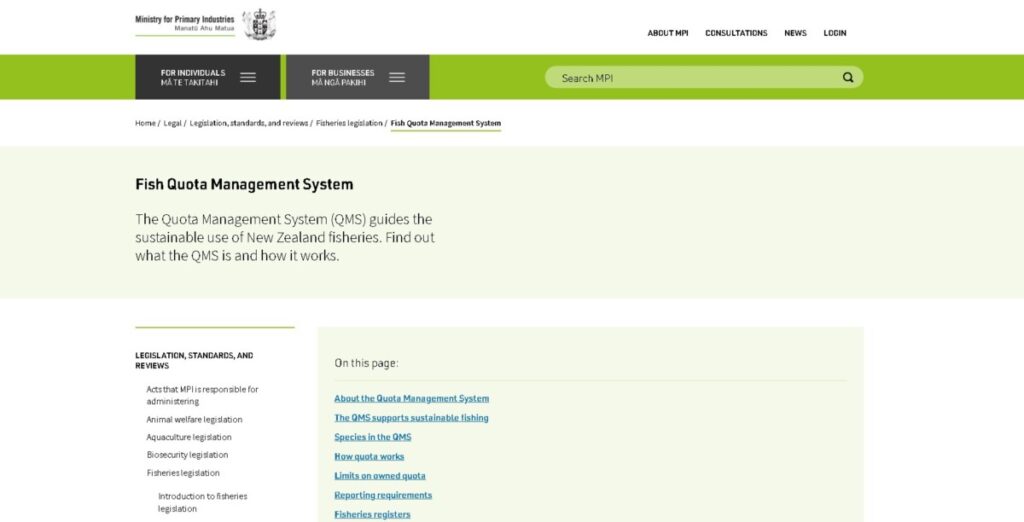Sustainable fishery is a crucial topic today, focusing on managing fish populations and preserving marine ecosystems. It’s a practice that aims to ensure that fishing activities do not hurt negatively or impact the environment and that fish populations can naturally replenish themselves.
What is a Sustainable Fishery?

A sustainable fishery can be defined as catching fish in a way that does not compromise the long-term health and productivity of the fish populations or the marine ecosystems in which they live. Sustainable fishery is crucial for a few reasons:
- Preservation of Fish Stocks: By implementing sustainable practices, we can prevent overfishing and depletion of fish stocks, ensuring their availability for future generations.
- Protection of Marine Ecosystems: Sustainable fishery practices aim to minimize the impact on the marine environment, including habitats, biodiversity, and other species that depend on healthy fish populations.
- Economic Benefits: By adopting sustainable fishery practices, fishing communities can ensure their industry’s long-term viability, benefiting current and future generations.
- Consumer Demand: With increasing awareness about the importance of sustainable practices, consumers are actively seeking sustainably sourced seafood. By meeting this demand, fisheries can gain a competitive edge in the market.
Challenges Faced by Traditional Fishing Practices
Traditional fishing practices often face a few challenges that can hinder their sustainability:
- Overfishing: Unsustainable fishing practices, such as excessive harvesting or destructive fishing methods, can lead to the depletion of fish stocks.
- Bycatch: Non-target species, including endangered or protected species, often get caught in fishing gear, resulting in their unintentional capture and potential harm.
- Habitat Destruction: Certain fishing methods, such as bottom trawling, can cause significant damage to marine habitats, including coral reefs and seafloor ecosystems.
- Lack of Regulation and Monitoring: In some regions, adequate regulations and monitoring systems are lacking to ensure sustainable fishing practices are followed.
To address these challenges, fisheries must transition towards sustainable practices promoting responsible fishing and marine ecosystems’ long-term health.
Principles of Sustainable Fishery Management

Ecosystem-based Fisheries Management
Ecosystem-based fisheries management: is an approach that considers the interactions between fish populations, their habitats, and other species in the ecosystem. It aims to maintain the health and productivity of the entire ecosystem rather than focusing solely on individual fish stocks.
This approach helps ensure the sustainability of the fishery and its long-term viability. It considers factors such as ecosystem structure and function, species interactions, and the impact of fishing practices in the broader ecosystem.
Maintaining Healthy Fish Stocks
Maintaining healthy fish stocks is crucial for sustainable fishing. This involves setting catch limits and quotas based on scientific assessments of the fish populations and their reproductive capacity. It also includes implementing measures to prevent overfishing, such as enforcing fishing seasons, size limits, and gear restrictions. Maintaining healthy fish stocks can ensure the fishery’s long-term sustainability and protect fishermen’s livelihoods.
Reducing Bycatch and Discards
Reducing bycatch refers to the unintentional capture of non-target species in fishing gear. This can include species of conservation concern and smaller fish that are not commercially valuable. Bycatch can lead to unnecessary mortality and disruption of the ecosystem.
To reduce bycatch, sustainable fishery practices aim to use selective fishing gear, such as fish and turtle devices, and implement measures to avoid areas where non-target species are abundant.
Protecting Habitat and Marine Ecosystems
Protecting habitat and marine ecosystems is crucial for maintaining the health and productivity of fish populations. Fishing practices that damage or destroy habitats, such as bottom trawling, can have long-lasting impacts on the ecosystem.
Sustainable fishery management aims to protect these habitats by implementing marine protected areas and habitat restoration projects. Protecting habitat and marine ecosystems can ensure the fishery’s long-term sustainability and the marine environment’s biodiversity.
By adhering to these principles of sustainable fishery management, we can ensure the long-term health and viability of our fish stocks, protect the marine ecosystem, and support the livelihoods of fishermen. Sustainable fishing practices are crucial for our oceans’ future and the fishery industry’s sustainability.
See Related: Is Water a Renewable Resource? Things to Know
Sustainable Fishing Techniques

Sustainable fishing techniques ensure our oceans’ long-term health and productivity. By employing methods that minimize harm to the marine ecosystem, we can continue to enjoy the benefits of fishing while preserving the delicate balance of marine life. Here are some critical sustainable fishing techniques that are being implemented around the world:
Selective Fishing Methods
Selective fishing methods, such as hook-and-line and spearfishing, target specific species while minimizing the capture of non-targeted and undersized fish. These methods help avoid overfishing and reduce the impact on vulnerable marine species.
Gear Modifications to Prevent Bycatch
Gear modifications, such as circle hooks, escape devices, and turtle excluder devices (TEDs), help reduce bycatch – the unintentional capture of non-targeted species. By implementing these modifications, fishermen can release non-targeted species with minimal harm, ensuring their survival and the overall health of the marine ecosystem.
Integration of Technology in Fishing Practices
Technology integration in fishing practices has revolutionized how we fish sustainably. Some examples include:
- GPS and Sonar Systems: These tools help fishermen navigate and locate fish more efficiently, reducing the search time and minimizing fuel consumption.
- Real-time Monitoring: Satellite monitoring systems allow authorities to track fishing vessels and ensure compliance with fishing regulations, reducing the incidence of illegal, unreported, and unregulated (IUU) fishing.
- Underwater Cameras: Remotely operated underwater cameras provide valuable information on fish populations and habitats, helping scientists and fishermen make informed decisions on fishing practices and conservation efforts.
By adopting these sustainable fishing techniques and integrating technology into fishing practices, we can promote responsible and environmentally friendly fishing practices, ensuring the long-term sustainability of our oceans and the livelihoods of fishing communities.
Sustainable Fishing Certification Programs
Various organizations have developed sustainable fishing certification programs to ensure the continued availability of seafood and protect marine ecosystems. These programs certify fisheries and aquaculture operations that follow environmentally responsible practices. Here are two prominent certification programs in the industry.
Marine Stewardship Council (MSC)

The Marine Stewardship Council (MSC) is a globally recognized certification and eco-labeling program for wild-caught seafood. The MSC works with fisheries, seafood companies, scientists, and conservation organizations to promote sustainable fishing practices. Fisheries that meet the MSC’s rigorous standards for sustainable fishing can be MSC certified and display the MSC blue label on their products.
The MSC certification process evaluates the sustainability of fish stocks, the impact of fishing activities on the ecosystem, and the effectiveness of fisheries management. It also considers the social and economic aspects of fisheries.
By choosing seafood with the MSC label, consumers can support sustainable fishing practices and contribute to the preservation of marine environments. The MSC label ensures that the seafood comes from a fishery independently assessed against stringent sustainability criteria.
Aquaculture Stewardship Council (ASC)

The Aquaculture Stewardship Council (ASC) is an independent, third-party certification and labeling program for responsible aquaculture. The ASC sets environmental and social responsibility standards in aquaculture operations, ensuring that farmed seafood is produced with minimal impact on the environment and society.
ASC-certified farms adhere to guidelines that cover crucial issues such as water quality, feed sourcing, disease management, and social welfare. These standards help improve farming practices, reduce antibiotics and chemicals, and protect sensitive ecosystems.
The ASC label on seafood products gives consumers confidence that the farm responsible for the development has met the ASC’s rigorous sustainability criteria.
By supporting MSC and ASC-certified products, consumers can be crucial in promoting sustainable fishing and aquaculture practices. These certification programs incentivize fisheries and aquaculture operations to adopt responsible practices, ultimately contributing to the preservation of our oceans and the availability of seafood for future generations.
Case Studies of Successful Sustainable Fishery Practices
New Zealand’s Quota Management System

New Zealand’s Quota Management System (QMS) is an exemplary model of sustainable fishery practices. The QMS was implemented in 1986 to conserve fish stocks and ensure the long-term viability of the fishing industry. Here are some key features of New Zealand’s QMS:
- Individual Transferable Quotas (ITQs): Under the QMS, the government sets a total allowable catch for each fish species. These catches are then divided into individual transferable quotas allocated to fishermen and fishing companies. This ensures that fish stocks are not overexploited and encourages responsible fishing practices.
- Scientific Monitoring and Research: New Zealand’s QMS is supported by comprehensive scientific monitoring and research programs. This includes regular stock assessments, monitoring of fishing practices, and scientific research to understand the health of fish populations and their habitats. The data collected helps inform management decisions and ensures sustainable fishing practices.
- Stakeholder Involvement: The success of New Zealand’s QMS can be attributed to extensive stakeholder involvement. The government works closely with commercial fishermen, recreational anglers, and indigenous Māori communities to develop and implement fishing regulations. This collaborative approach ensures that the needs and perspectives of all stakeholders are considered.
Alaska’s Sustainable Salmon Fisheries

Alaska’s salmon fisheries are a shining example of sustainable fishing practices. The state has strict regulations and management practices in place to protect salmon populations and the ecosystems they rely on. Here are some key aspects of Alaska’s sustainable salmon fisheries:
- Limited Entry Permit System: Alaska’s fisheries are managed through a limited entry permit system. This ensures that only a certain number of individuals or vessels can participate in the fishery, preventing overfishing and protecting the long-term sustainability of salmon populations.
- Spawning Grounds Protection: Alaska’s fisheries prioritize the protection of salmon spawning grounds. The state has designated critical habitats and spawning areas off-limits to fishing activities. This helps ensure that salmon populations can successfully reproduce and maintain healthy numbers.
- Science-Based Management: Alaska’s salmon fisheries are guided by science-based management practices. The state conducts regular stock assessments, closely monitors salmon populations and their habitats, and adjusts fishing regulations accordingly. This ensures that fishing efforts are sustainable and that salmon stocks remain healthy.
These case studies demonstrate that sustainable fishery practices, such as New Zealand’s QMS and Alaska’s salmon fisheries, play a crucial role in protecting fish populations and maintaining the health of marine ecosystems. We can ensure a sustainable future for the fishing industry and the environment by implementing responsible fishing practices.
Benefits of Sustainable Fisheries

Sustainable fishery is vital in ensuring our oceans’ long-term health and productivity. It helps protect marine ecosystems and offers numerous benefits to fishing communities and consumers. Here are some key advantages of sustainable fishery:
Environmental Benefits
- Conservation of Fish Stocks: Sustainable fishery practices aim to maintain fish populations healthy, preventing overfishing and reducing the risk of species depletion. By implementing catch limits, size restrictions, and habitat protection measures, sustainable fishery helps preserve biodiversity and the delicate balance of marine ecosystems.
- Reduction of Bycatch: Bycatch refers to the unintentional capture of non-target species during fishing operations. Sustainable fishery efforts strive to minimize bycatch through selective fishing gear and techniques, reducing the negative impact on non-target species such as marine mammals, seabirds, and turtles.
- Protection of Habitat: Sustainable fishery practices prioritize the protection of sensitive habitats such as coral reefs, seagrass beds, and mangroves. Sustainable fishery contributes to marine ecosystems’ overall resilience and health by adopting fishing methods that minimize damage to these habitats.
Economic Benefits for Fishing Communities
- Long-term livelihoods: Sustainable fishery practices promote the long-term viability of fishing communities by ensuring the availability of fish stocks for future generations. By avoiding overfishing and implementing responsible management measures, sustainable fishery helps maintain the economic stability and livelihoods of those dependent on the fishing industry.
- Market Access: As consumer demand for sustainable seafood increases, fisheries that adhere to sustainable practices have improved market access and demand for their products. By adopting sustainable fishery practices, fishing communities can secure their position in the global seafood market and access premium prices for their sustainably harvested seafood.
See Related: Different Overfishing Solutions for Conservation
Consumer Confidence in Sustainable Seafood
- Assured Quality and Safety: Sustainable seafood is often subjected to strict quality and safety standards, ensuring that consumers receive products of the highest quality. By choosing sustainably sourced seafood, consumers can have confidence in their products’ safety, freshness, and ethical origins.
- Contribution to Conservation: Supporting sustainable fishery practices through consumer choices helps promote the conservation of our oceans and marine resources. By opting for sustainable seafood options, consumers can contribute to protecting marine ecosystems and the long-term sustainability of fish stocks.
Role of Consumers in Supporting Sustainable Fishing

Consumers play a crucial role in supporting sustainable fishery practices by making informed seafood choices and looking for certifications and labels that signify sustainable fishing practices. Here are some ways consumers can contribute to the sustainability of the fishing industry:
Making Informed Seafood Choices
- Know the Source: When purchasing seafood, consumers should inquire about the source of the fish. Choosing locally caught or sustainably caught fish helps support fisheries that follow sustainable practices.
- Sustainable Species: Consumers can choose seafood from sustainable fish species. The Monterey Bay Aquarium’s Seafood Watch program provides a comprehensive guide on sustainable seafood choices for various regions. It categorizes seafood into Best Choices, Good Alternatives, and Avoids categories based on the sustainability of the fishery.
- Seasonality: Consuming seafood in its peak season helps reduce the impact on fish populations. It allows species to reproduce and replenish their numbers.
Certifications and Labels to Look for
Consumers can also look for certifications and labels that indicate sustainable fishing practices. Here are some to watch out for:
- MSC Certification: The Marine Stewardship Council (MSC) certifies fisheries that meet their strict sustainability criteria. Consumers can be confident that the fishery operates sustainably when purchasing seafood with the MSC blue label.
- ASC Certification: The Aquaculture Stewardship Council (ASC) certifies responsible aquaculture practices. Look for the ASC logo when purchasing farmed seafood, ensuring the product comes from a sustainable source.
- Friend of the Sea: Friend of the Sea is an international certification program verifying the sustainability of wild-caught and farmed seafood. Consumers can look for the Friend of the Sea label as an assurance of sustainable fishing practices.
Future of Sustainable Fishing

The future of sustainable fishery faces challenges and opportunities in achieving and maintaining sustainability in the fishing industry. With the increasing demand for seafood and the threat of overfishing, it is crucial to find ways to ensure the long-term viability of fish stocks and protect marine ecosystems. Here are some of the challenges and opportunities in achieving sustainability in the fishery:
Challenges
- Overfishing: Overfishing, which occurs when fish are caught faster than they can reproduce, remains one of the biggest challenges to a sustainable fishery. This practice depletes fish populations, leading to ecosystem imbalances and threatening the livelihoods of fishing communities.
- Illegal, Unreported, and Unregulated (IUU) Fishing: IUU fishing undermines sustainability efforts by operating outside the laws and regulations designed to protect fish stocks. It contributes to overfishing, jeopardizes marine biodiversity, and affects coastal communities’ economic and social well-being.
- Bycatch and Ghost Fishing: Bycatch, the unintentional catching of non-target species, and ghost fishing, the continuous trapping of marine organisms in abandoned fishing gear, pose significant challenges to sustainability. They can lead to unnecessary loss of biodiversity and marine life.
Opportunities
- Sustainable Fishing Practices: Advancements in fishing techniques and technologies provide opportunities for more sustainable fishing practices. Using methods that minimize bycatch, allow for selective fishing, and reduce habitat damage, anglers can help maintain healthy fish populations and protect marine ecosystems.
- Certification and Eco-Labeling: Certification programs, such as the Marine Stewardship Council (MSC), assure consumers that the fish they purchase comes from sustainable sources. Eco-labeling allows consumers to make informed decisions and support sustainable fisheries.
- Research and Technology: Continued research and developing innovative technologies offer opportunities to improve fishery management. This includes tools for better monitoring and tracking fishing activities and data-driven decision-making processes.
Achieving and maintaining sustainability in fishery requires collaborative efforts between government agencies, fishing communities, consumers, and other stakeholders. By addressing the challenges and embracing the opportunities, the future of sustainable fishery can be secured for generations to come.
Importance of Transitioning Towards Sustainable Fisheries

Transitioning towards sustainable fishery practices is crucial for the long-term preservation of marine ecosystems and the livelihoods of fishing communities. Here are some key reasons why sustainable fishery is crucial:
- Conservation of Marine Biodiversity: By adopting sustainable fishing methods, we can minimize the negative impact on marine biodiversity, such as overfishing and habitat destruction. This helps to protect a range of marine species and maintain the overall health of the ocean’s ecosystems.
- Protection of Endangered Species: Sustainable fishery practices include measures to avoid catching endangered species and reduce bycatch. These efforts are crucial for the conservation of vulnerable marine species, ensuring their survival in the long run.
- Preservation of Fishing Communities: Fishing communities across the globe depend on the ocean as their source of livelihood. By embracing sustainable fishery practices, we can ensure the sustainability of fish stocks, allowing fishing communities to thrive economically and culturally.
- Food Security: The world’s population is increasing, and there is a growing demand for seafood. Sustainable fishery practices help to ensure that future generations have access to plentiful and nutritious seafood. Additionally, sustainable fishing methods prioritize the long-term health of fish stocks, preventing overfishing and depletion.
- Climate Change Adaptation: Climate change significantly impacts the oceans, including rising sea temperatures and ocean acidification. Sustainable fishery practices contribute to the overall resilience of marine ecosystems, making them more adaptable to the impacts of climate change.
Transitioning towards sustainable fishery requires a collective effort from governments, fishing industries, and consumers. By making informed choices and supporting sustainable seafood options, individuals can contribute to the conservation and preservation of our oceans.
Crucial to raise awareness about the importance of sustainable fishery and encourage adopting responsible fishing practices. Together, we can protect marine biodiversity, support fishing communities, and ensure a sustainable future for our oceans.
Related Resources
- What Is the Main Effect of Overpopulation on Animals?
- Ways to Save Animals Facing Extinction
- What is Climate Change Mitigation? Here’s What to Know


